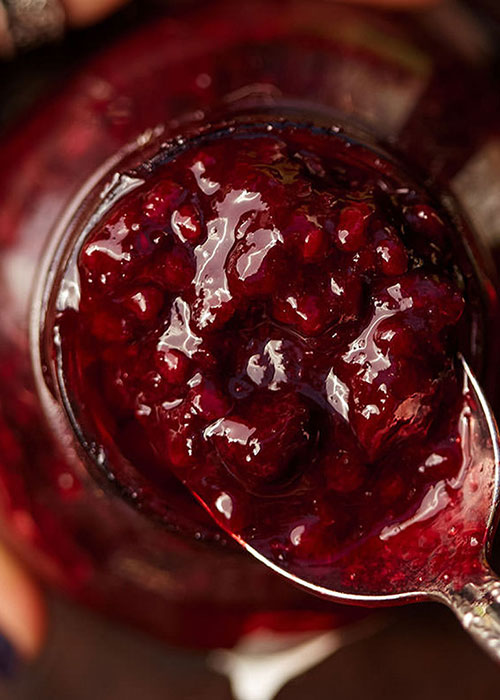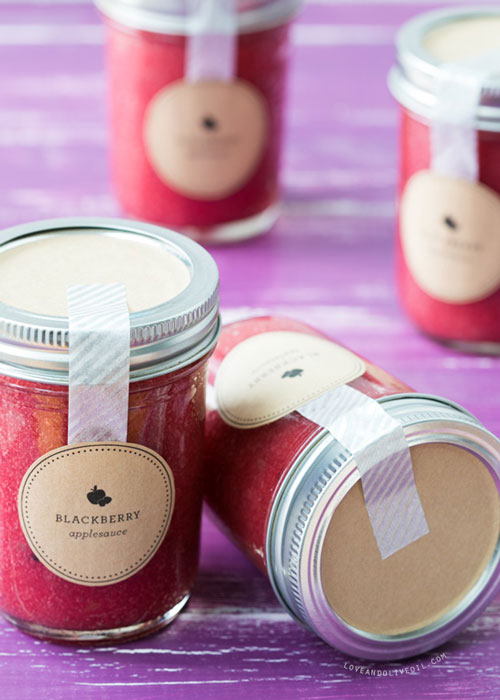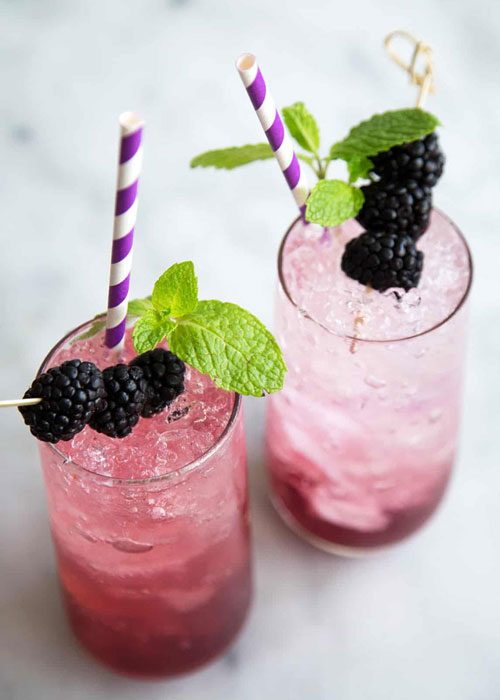Treat Yourself to a Healthier Habitat
For Oxbow’s Conservation Team, summer is their favorite time of year for controlling invasive blackberries—because it’s just so delicious! Did you know that every berry eaten, turned into jam, or frozen for smoothies can stop up to 80 seeds from sprouting into new plants and prevent animals from spreading the seeds and starting new areas of colonization? While snacking on blackberries isn’t the swiftest way to combat these weeds, it’s certainly the most yummy and fun approach.
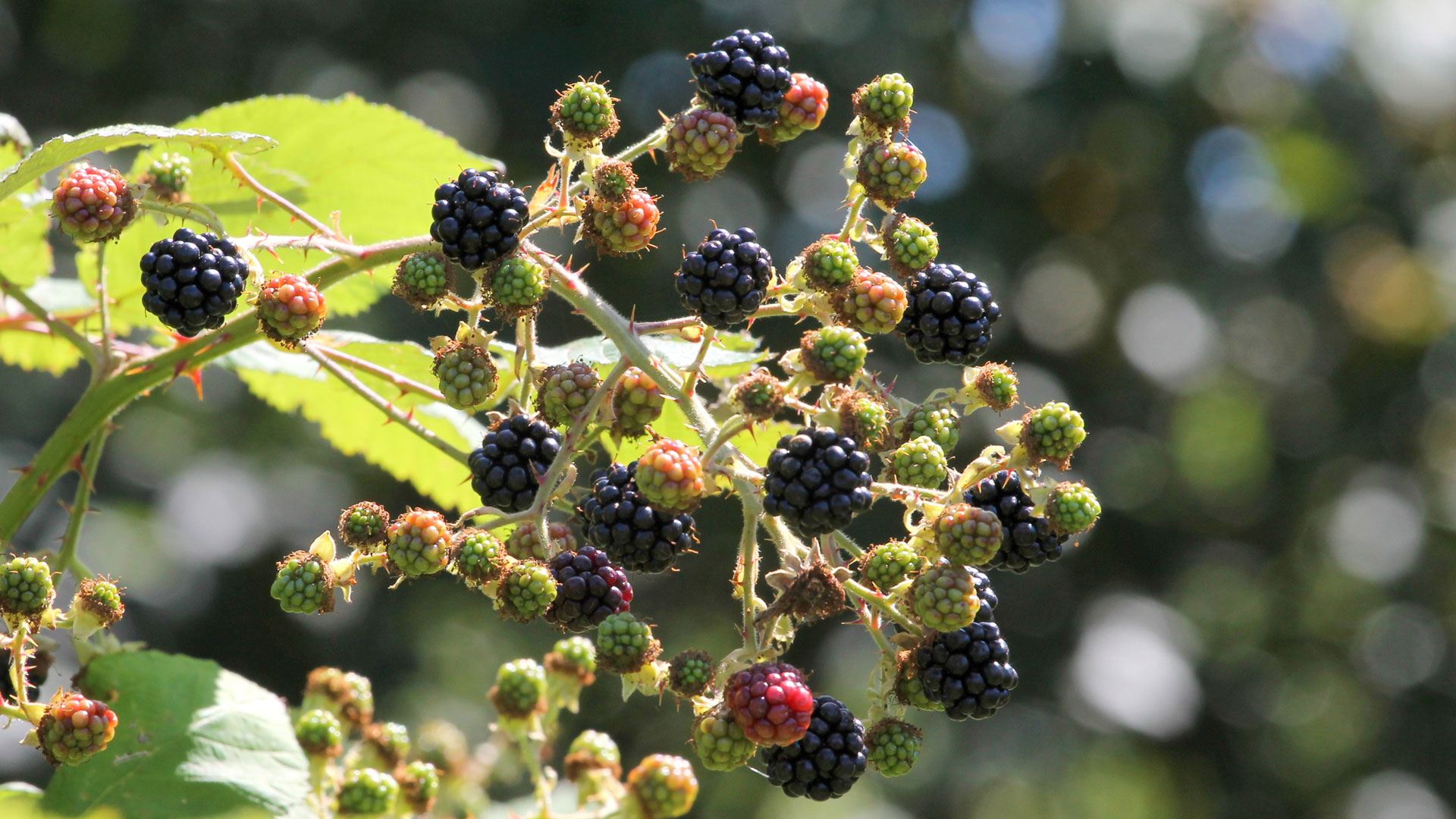
We’ll get to the juicy details on recipes, harvesting tips, and native blackberry distinctions soon, but first, let’s dish on why we need to prevent these (begrudgingly) tasty treats from regrowing.
Why are they widespread, and why don’t we want them?
The Himalayan and evergreen blackberry thickets you see everywhere aren’t native to North America. They were originally brought here from Eurasia for their fruit, but they quickly escaped cultivation and now dominate many wild areas. Blackberry brambles grow so fast and densely that they block sunlight from reaching other plant species and tree seedlings, preventing them from growing and reproducing. Over time, blackberries form a monoculture, taking over larger and larger areas and resulting in very low biodiversity.
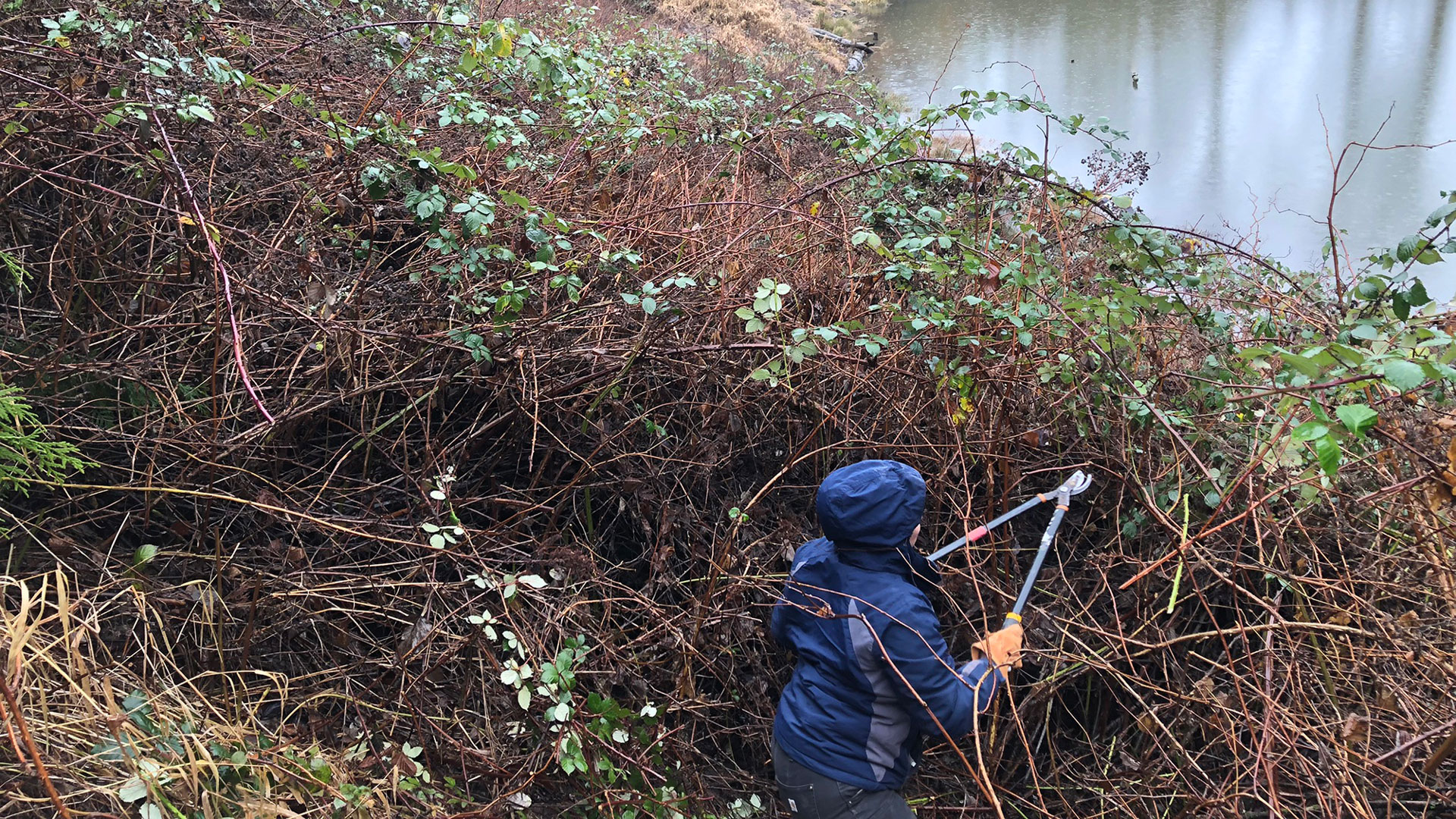
While some birds can nest in the thickets and some animals enjoy the berries, the lack of diversity disrupts the ecosystem. It causes a shortage of food for most animals throughout the year, reduces the variety of flowers for pollinators, and threatens habitats for both plants and animals. Along riverbanks where blackberries often take over, the lack of a forest canopy and readily available woody debris can lead to a population decline in salmon, a keystone species and important indicator of ecosystem health. Young salmon prefer the cool waters that healthy forest canopies provide and rely on tree roots and logs to create pockets of slow water where they can rest.
Support your local landscape by eating blackberries
By harvesting and eating blackberry fruit, you can help reduce their numbers and encourage biodiversity. Here are a few of our favorite ways to enjoy them:
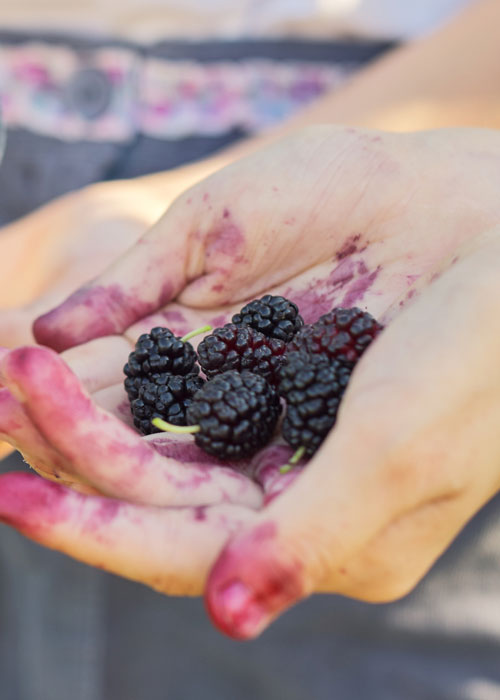
By the Handful
Team Oxbow
Instant gratification and zero dish washing!
Berry Compote
Elbows on the Table
A delightful topping for pancakes and ice cream.
Blackberry Applesauce
Love & Olive Oil
A sweet twist on a classic favorite.
Blackberry Shrub
The Little Epicuruan
A refreshing beverage perfect for summer days.
Harvesting tips
If you’re new to harvesting blackberries, here are some best practices to keep in mind:
- Avoid Sprayed Areas: Steer clear of berries treated with herbicides—no one wants a chemical snack! Look for posted notices about sprayed areas, but keep in mind that you might not spot them from every angle. It’s best to check with the landowner or manager before harvesting to ensure safety.
- Harvest Responsibly: Pick only where you have permission and watch out for potential contaminants from dogs and birds.
- Dress to Protect: Wear a long sleeve shirt and full-length pants. Skip the sandals, even if it’s hot. Your feet will thank you!
- Prune Away: Unlike with other foraged plants, feel free to use hand pruners to cut back thorny branches to access hard-to-reach berries—you don’t need to leave any for the birds.
- Wash Before You Eat: Before digging in, give your berries a swirl in a bowl of water with a splash of apple cider vinegar or salt to remove any potential bugs.
Distinguishing native plants
Did you know there are native blackberries and other related species we want to preserve? Here are a few pointers for how to identify the troublemakers from the beneficial berries:
Invasive
Himalayan Blackberry (Rubus armeniacus)
Growth Habit: Form dense, thorny shrubs and brambles. Can grow up to 15 feet in height and 40 feet in length. Canes grow in rigid arcs, creating dense thickets or climbing over other vegetation.
Flowers:
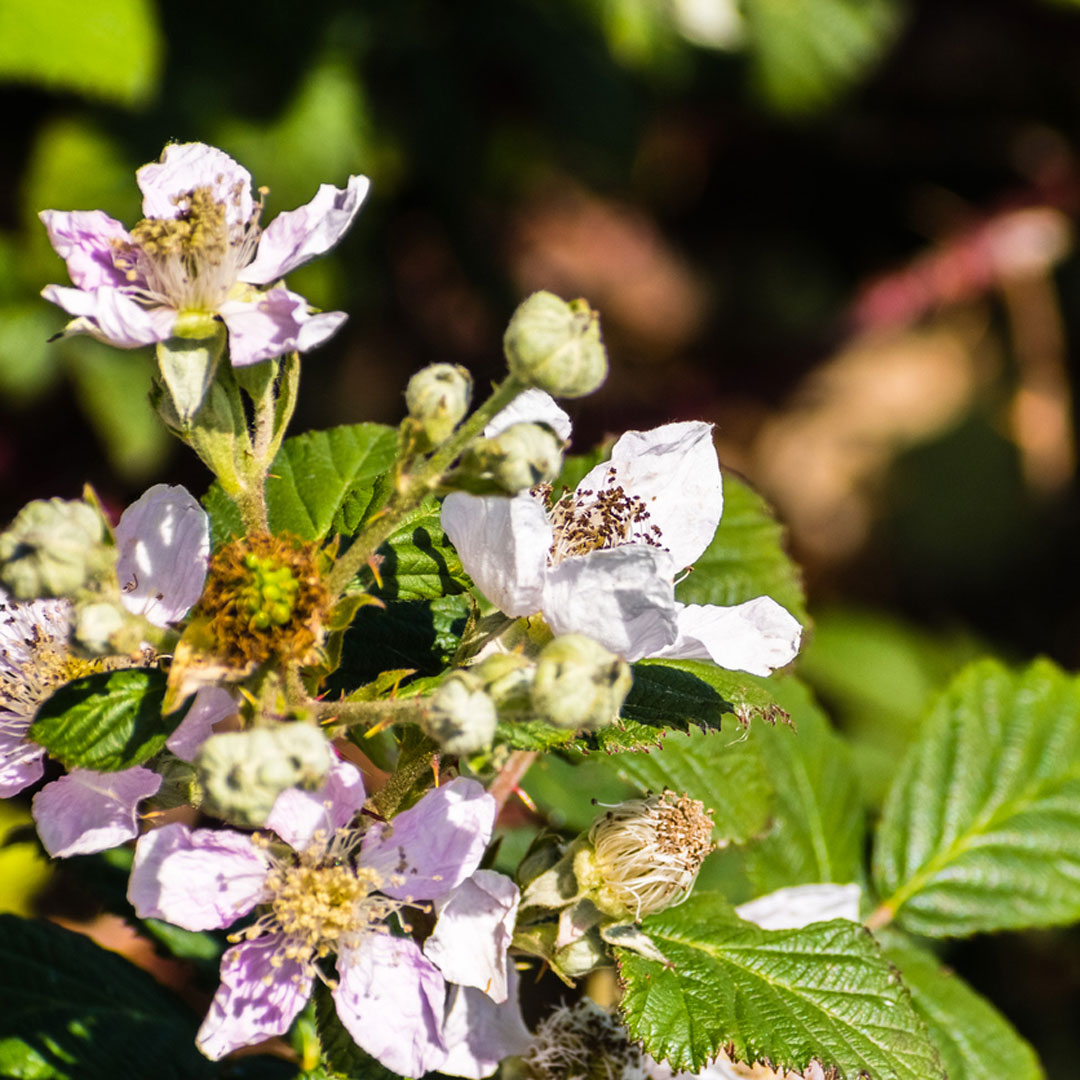
Pink to white 5-petaled flowers blooming in early summer.
Leaves:
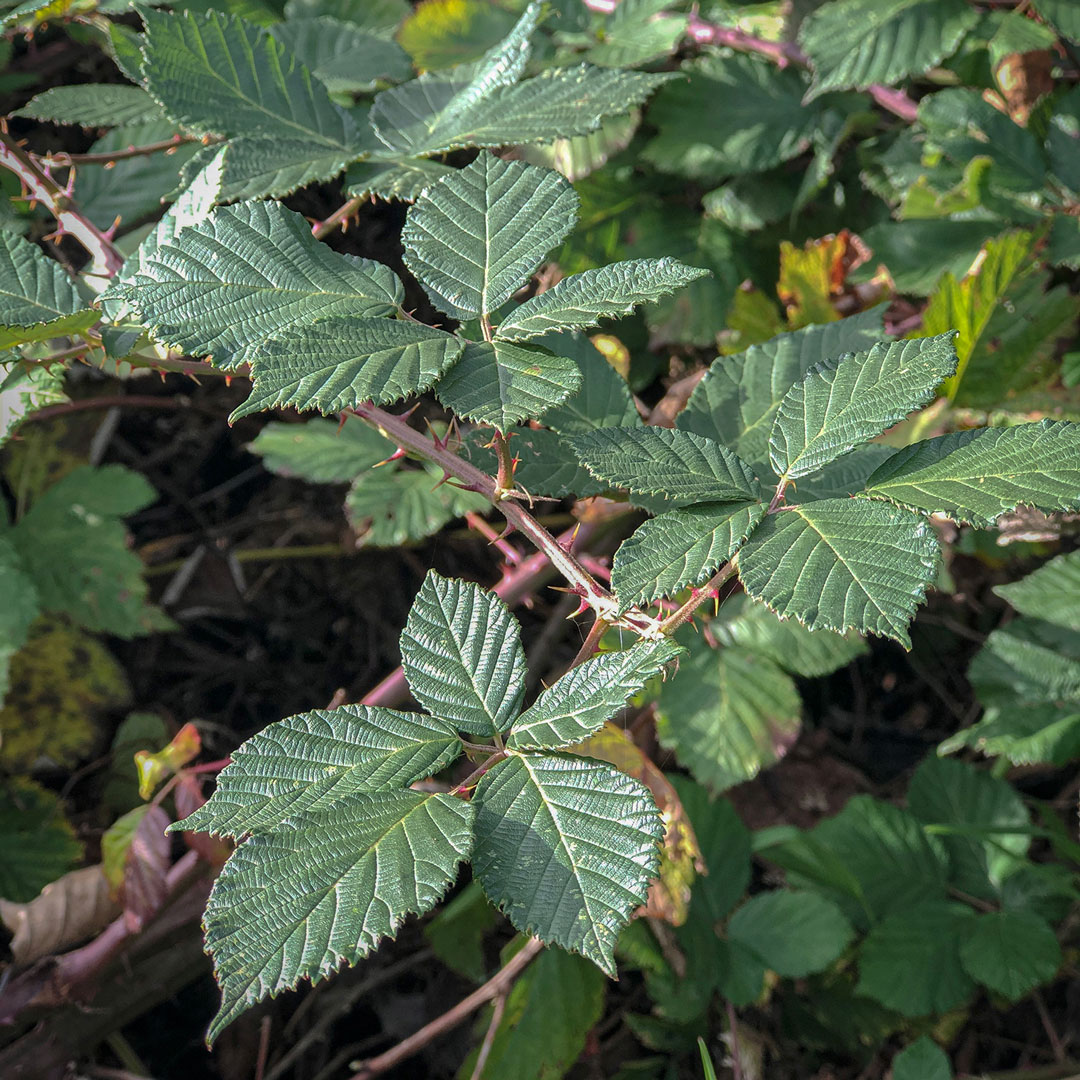
Leaves are divided into five separate leaflets spreading out like fingers on a hand. On young or weak plants there may only be 3 leaflets.
Stems:
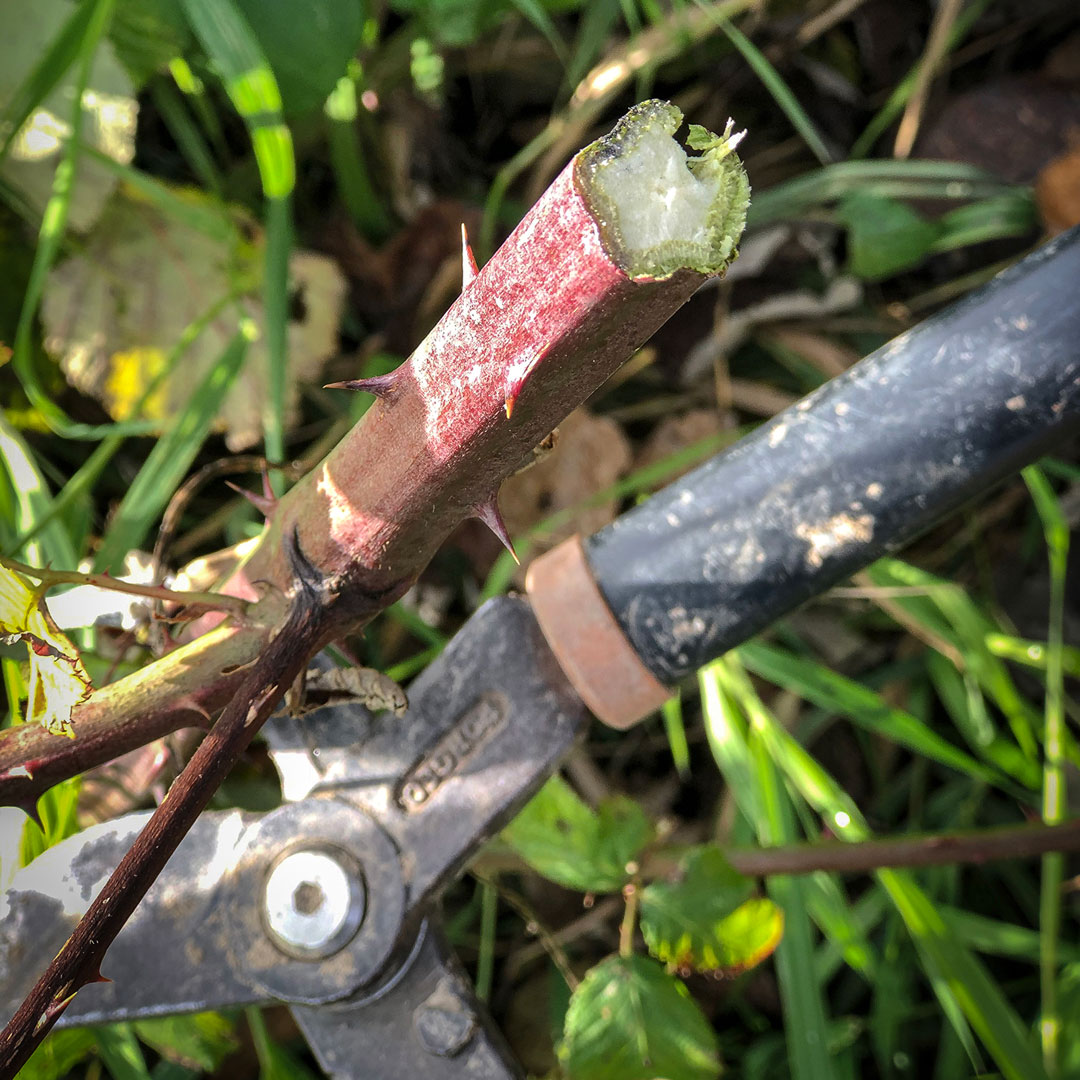
Thick canes, thumb to nearly wrist-sized. Prominent curved spines. Canes have a pentagon cross-section when cut.
Fruit:
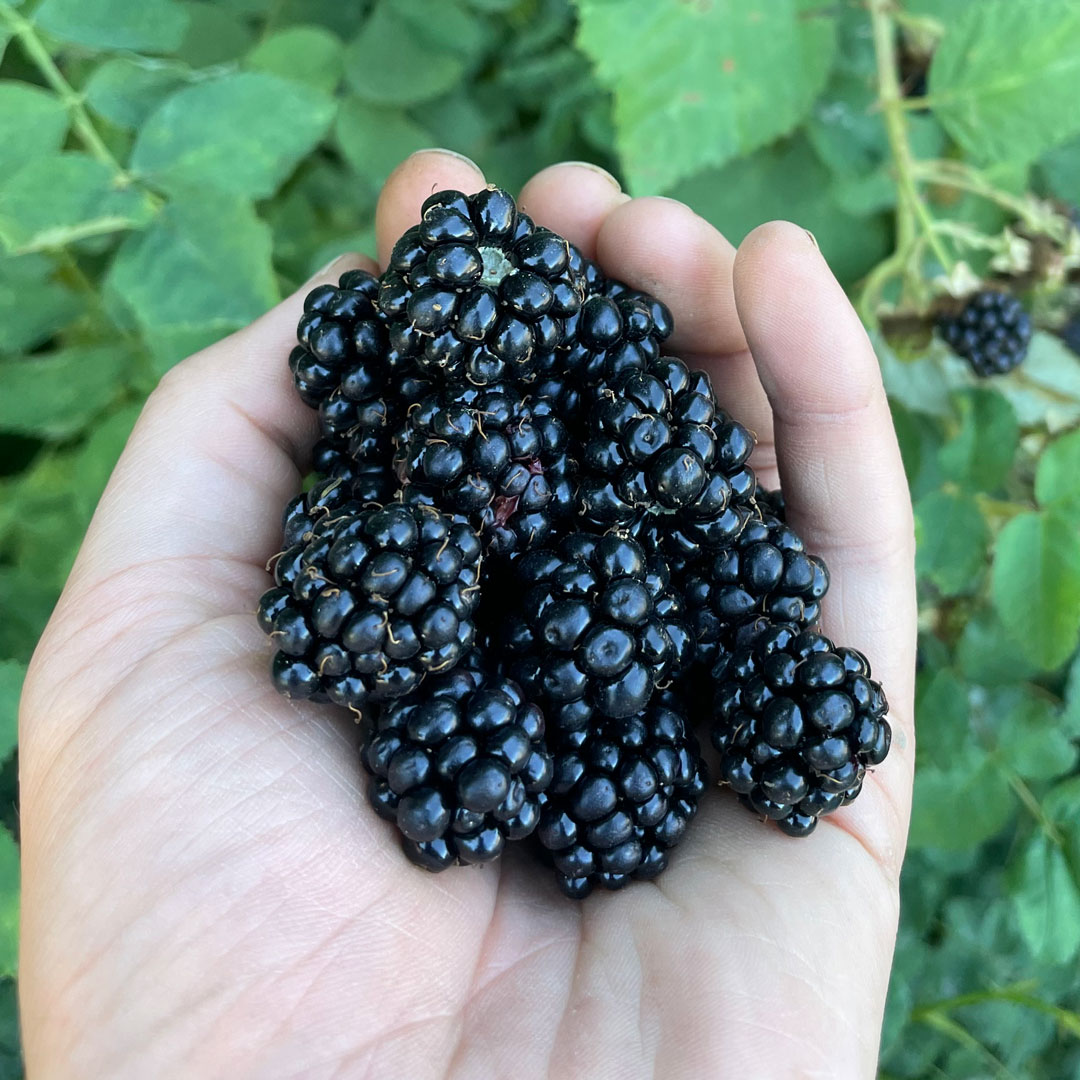
Produce dark purple blackberries in late summer (August-September).
Evergreen Blackberry or Cutleaf Blackberry (Rubus laciniatus)
Growth Habit: Form dense, thorny shrubs and brambles. Can grow up to 13 feet in height and 30 feet in length. Canes grow in arcs, creating dense thickets or climbing over other vegetation.
Flowers:
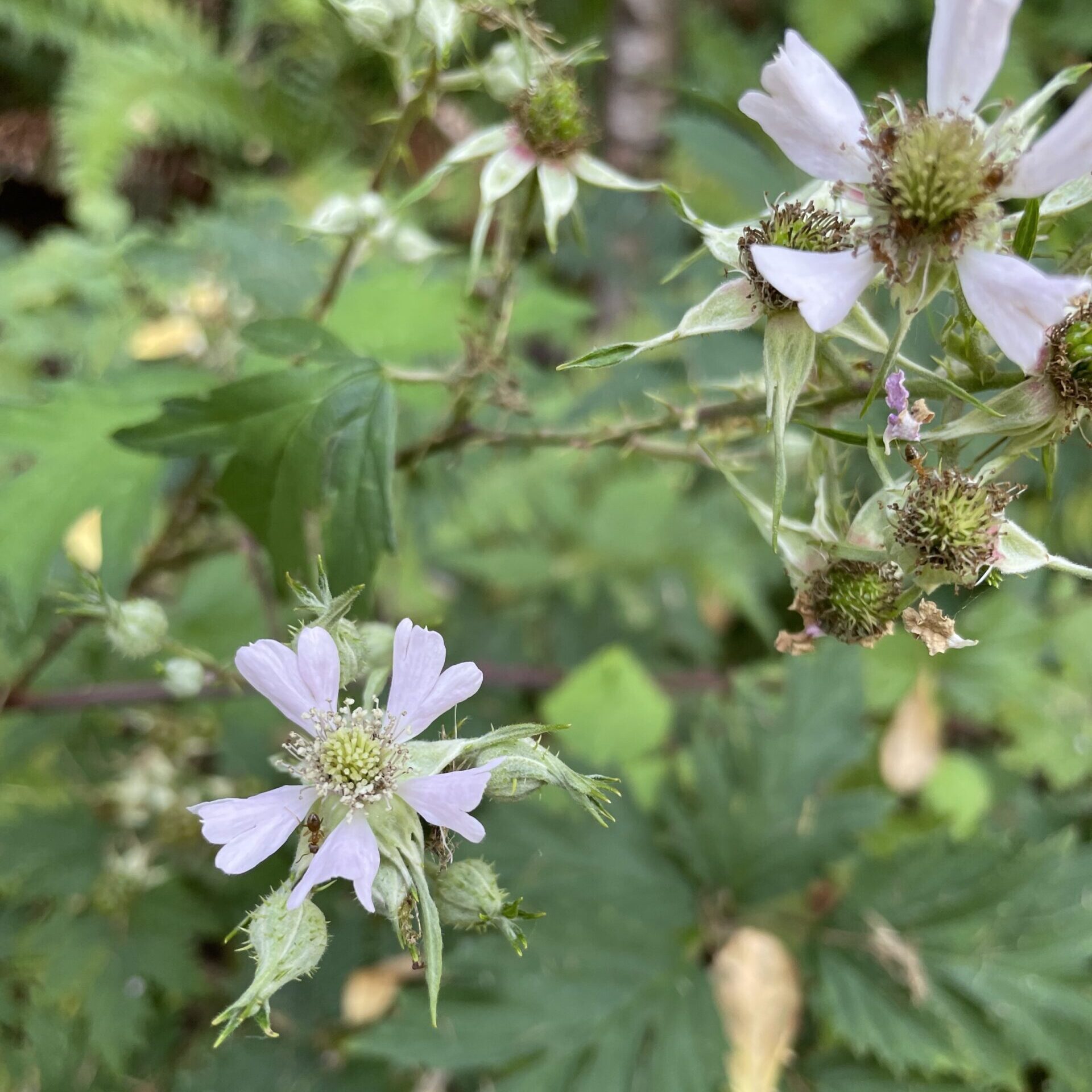
Pink to white 5-petaled flowers that are 3-lobed at the tip blooming in early summer.
Leaves:
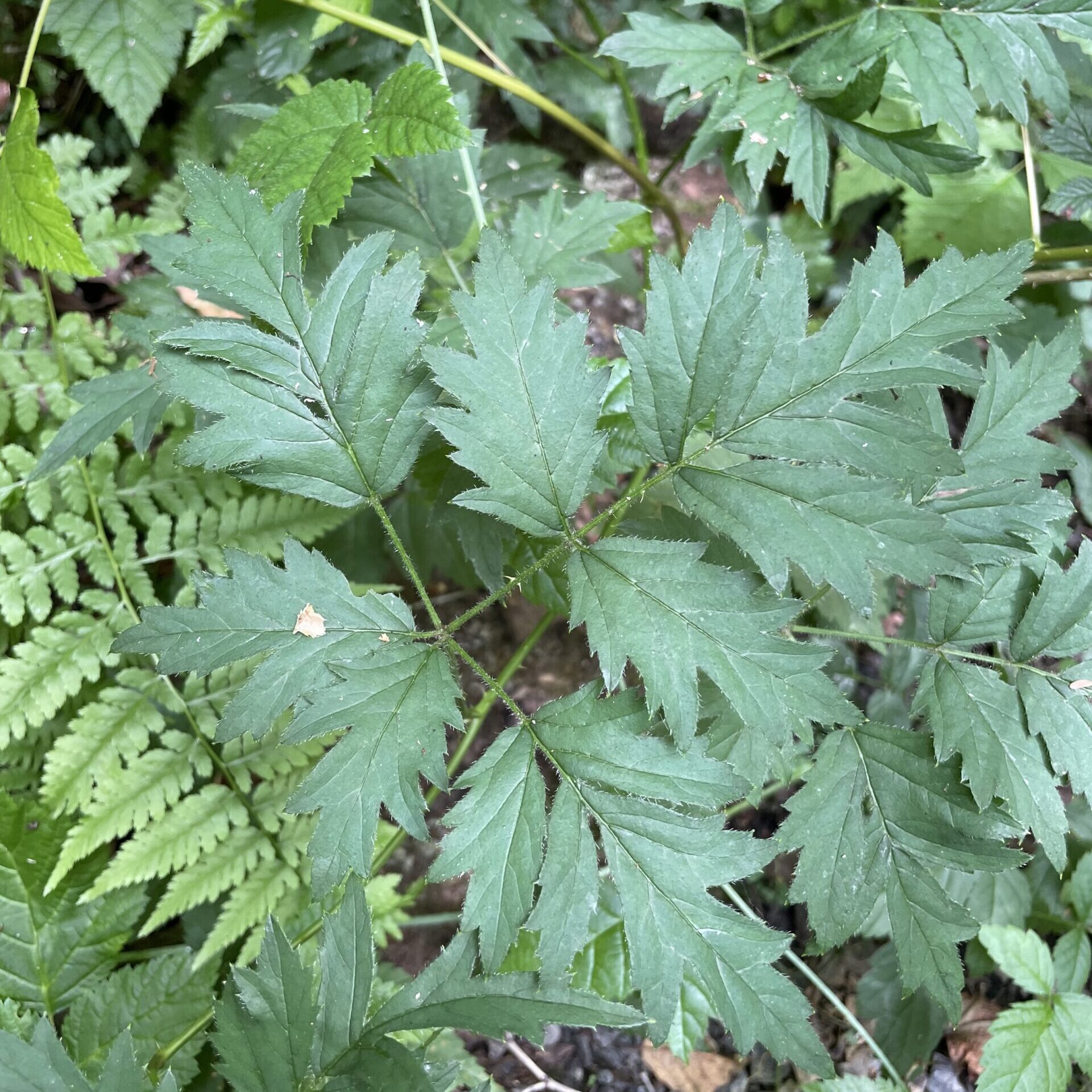
Deeply divided lacy leaves composed of three to five leaflets.
Stems:
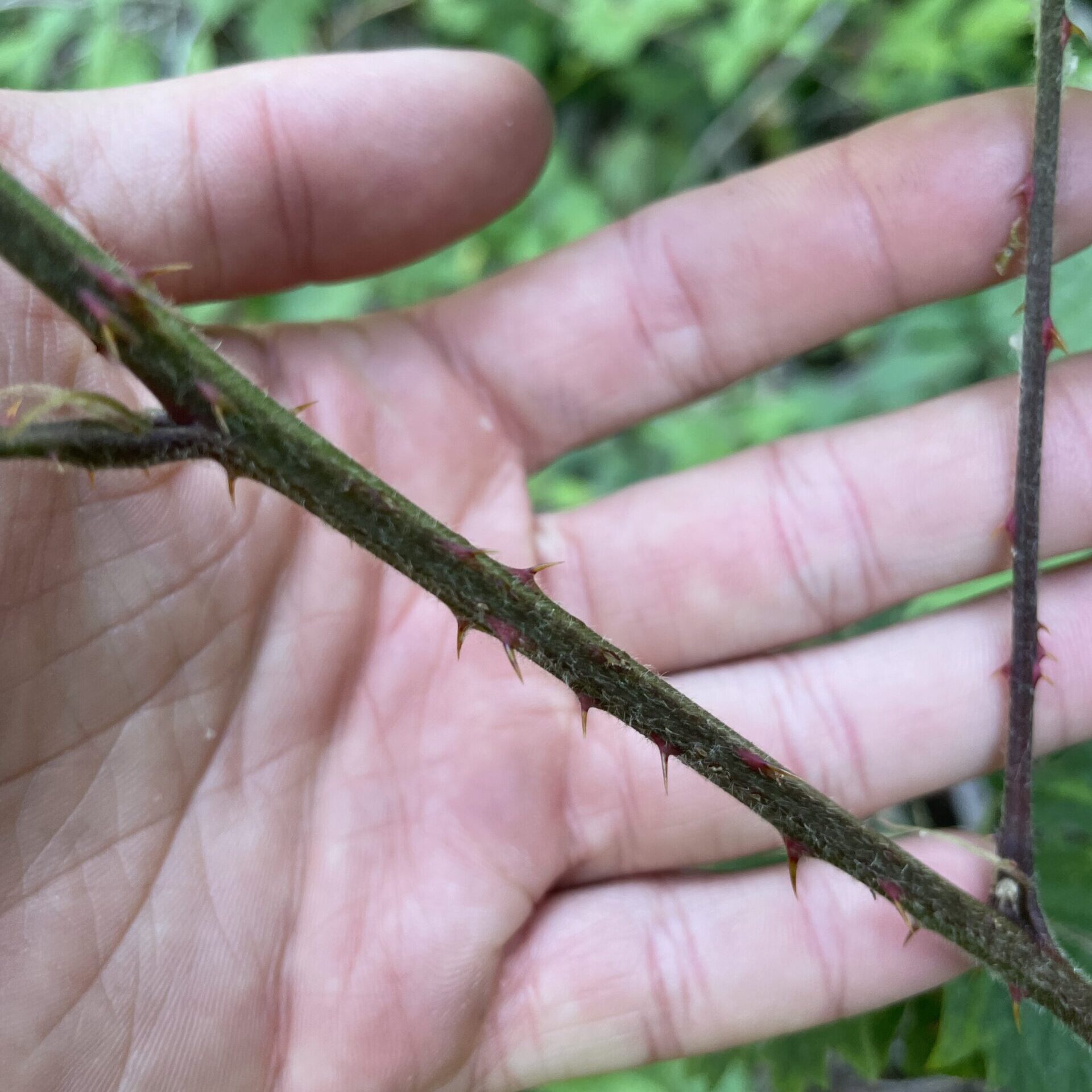
Recurved prickles cover the stems ranging from green to dark purple in color.
Fruit:
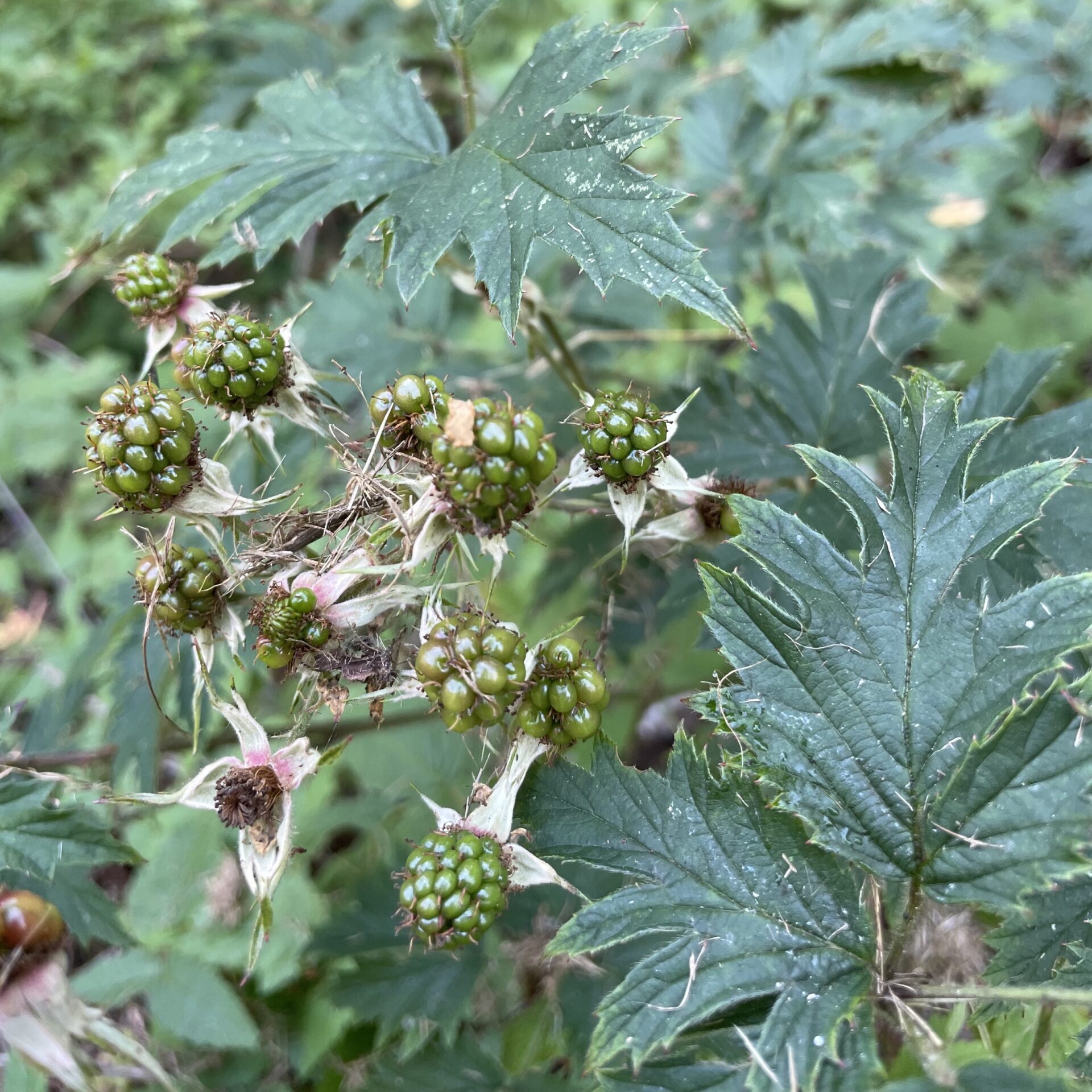
Produce dark purple blackberries in late summer (August-September).
Native
Trailing Blackberry (Rubus ursinus)
Growth Habit: More of a trailing vine, not forming dense thickets.
Flowers:
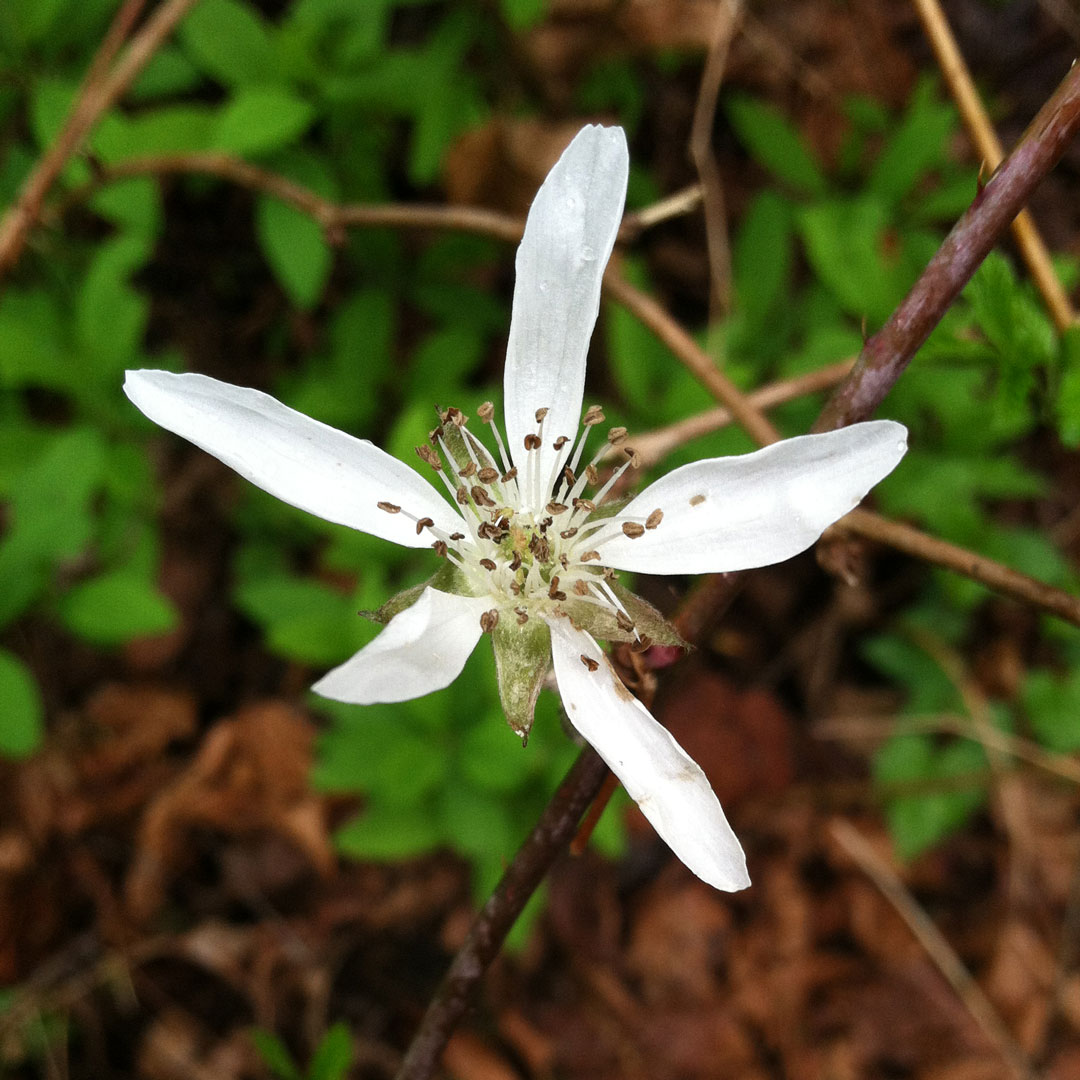
Dioecious small, white to pale pink 5-petaled flowers. (Pictured: male flower with longer thinner pedals)
Leaves:
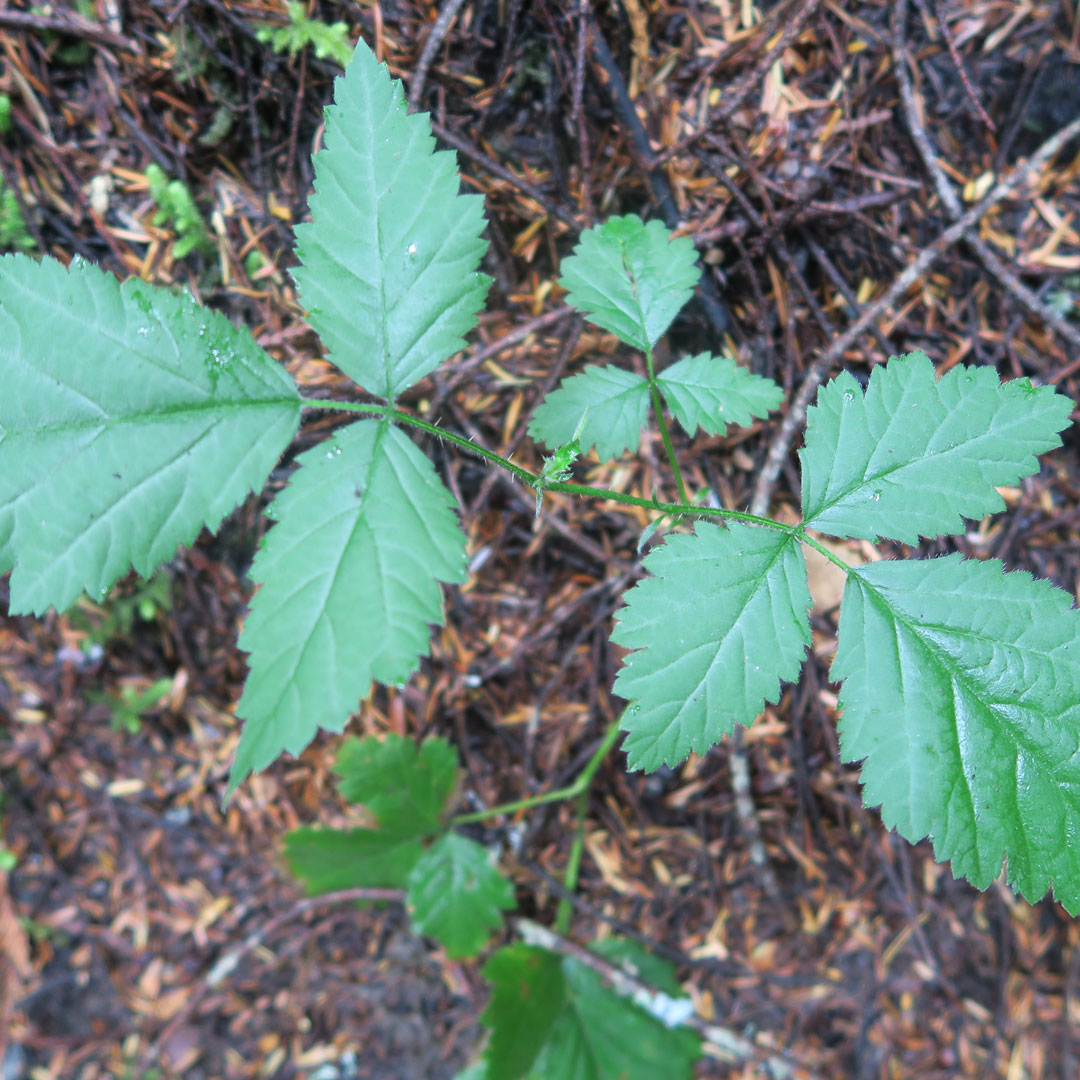
Leaves are comprised of three to five leaflets with relatively shallow serrations.
Stems:
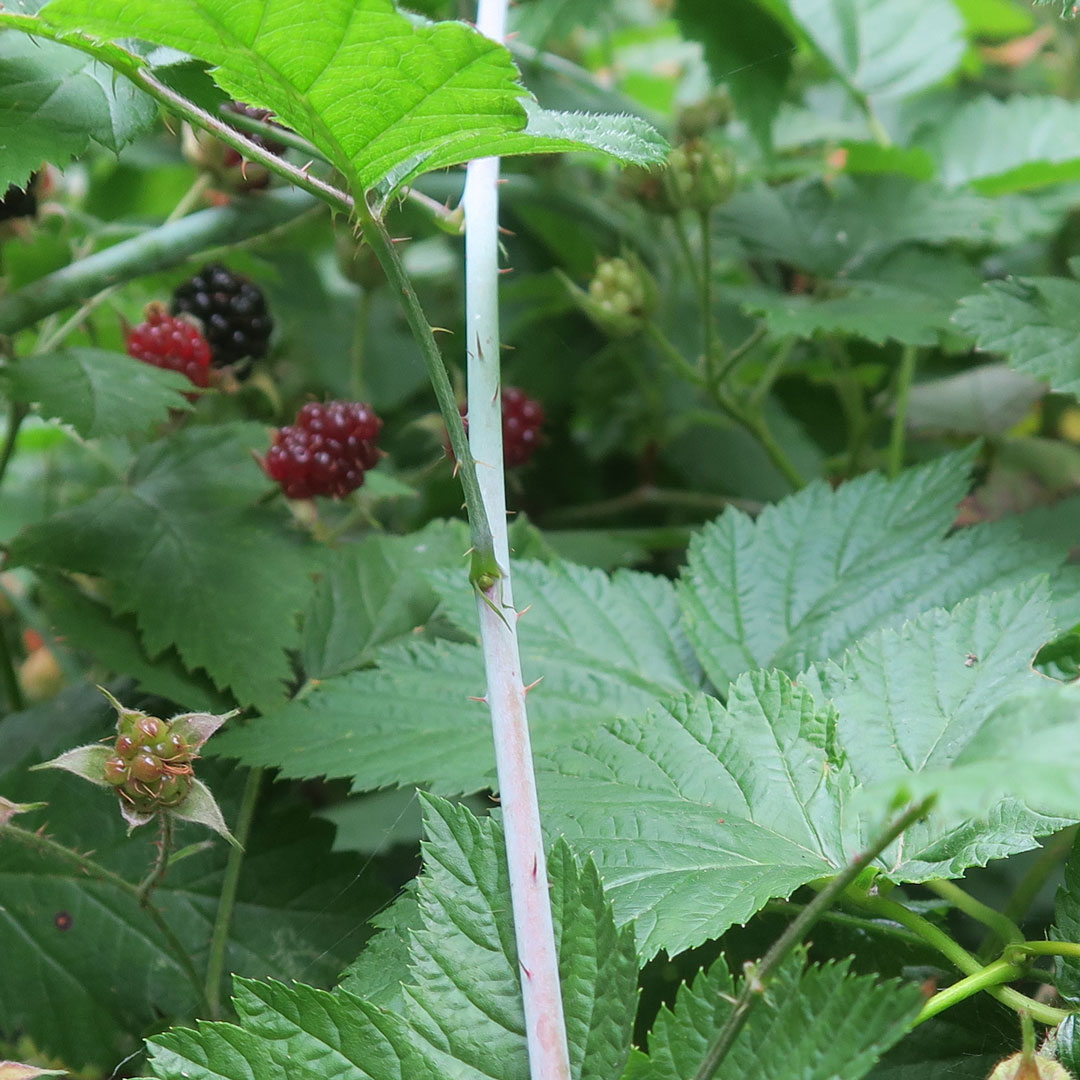
Thin, round, and flexible stems.
Fruit:
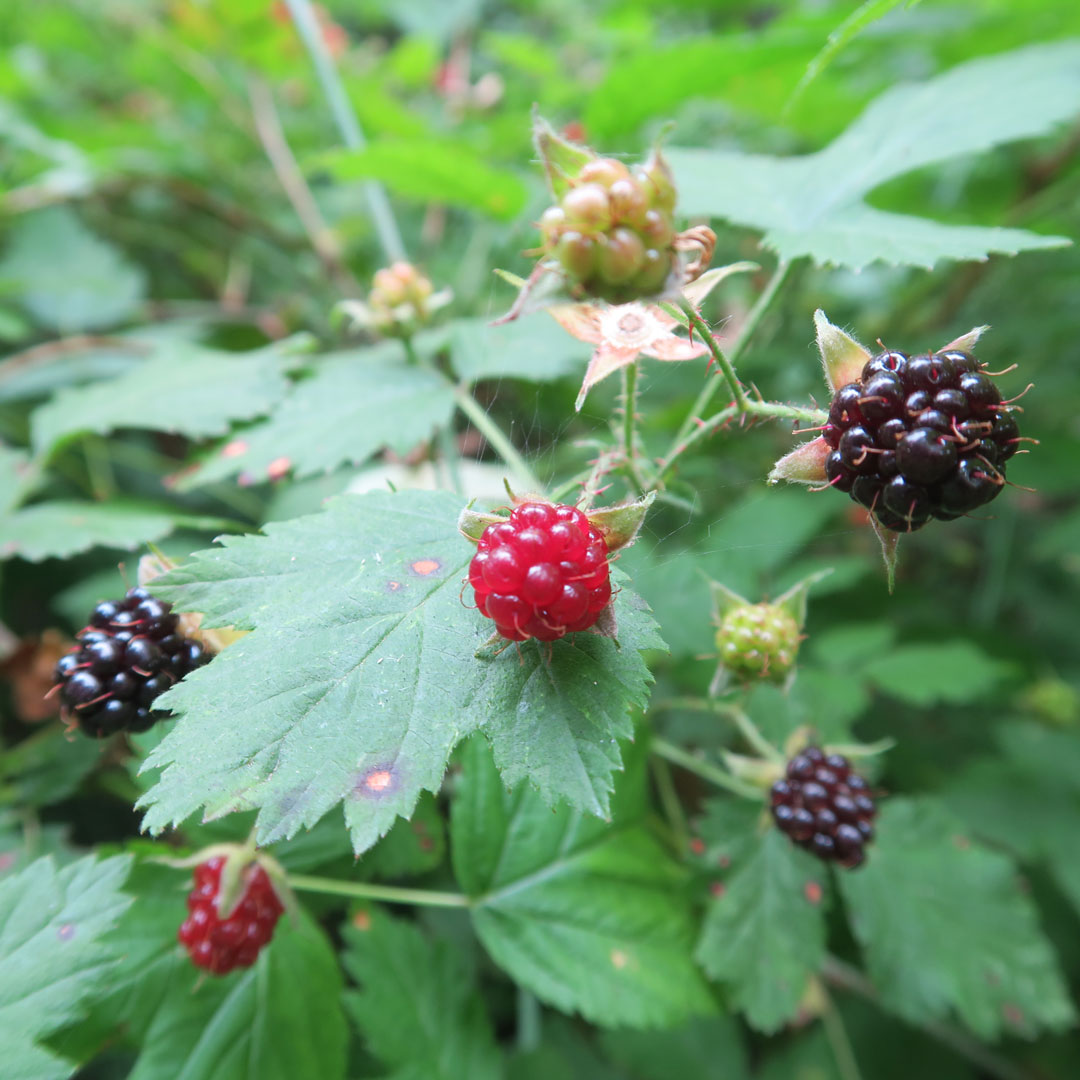
Smaller, sweet blackberries.
Native
Salmonberry (Rubus spectabilis)
Growth Habit: Grows upright, does not mound over other shrubs or use them as supports.Canes are much shorter in length and often point upwards.
Flowers:
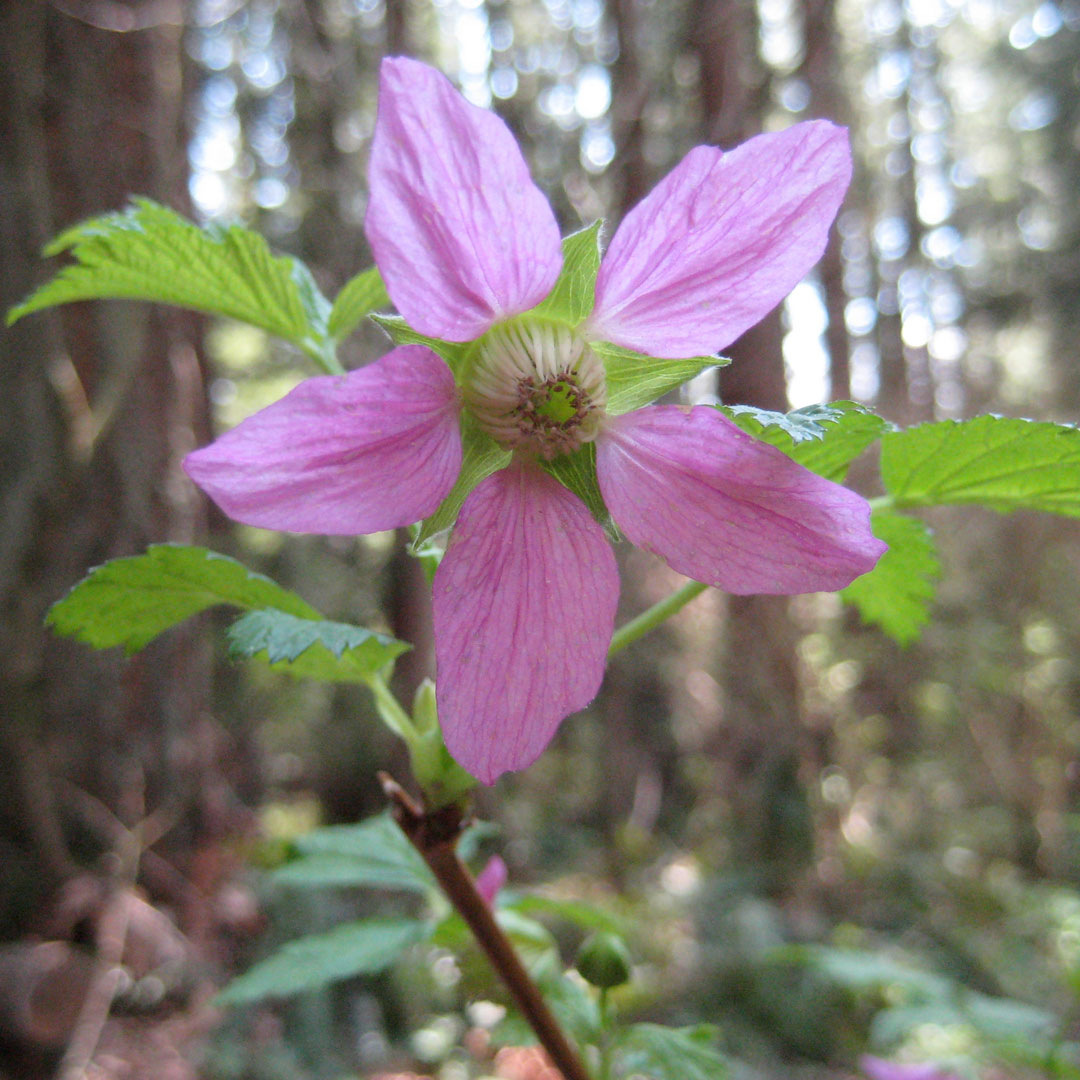
Distinctive pink to magenta flowers.
Leaves:
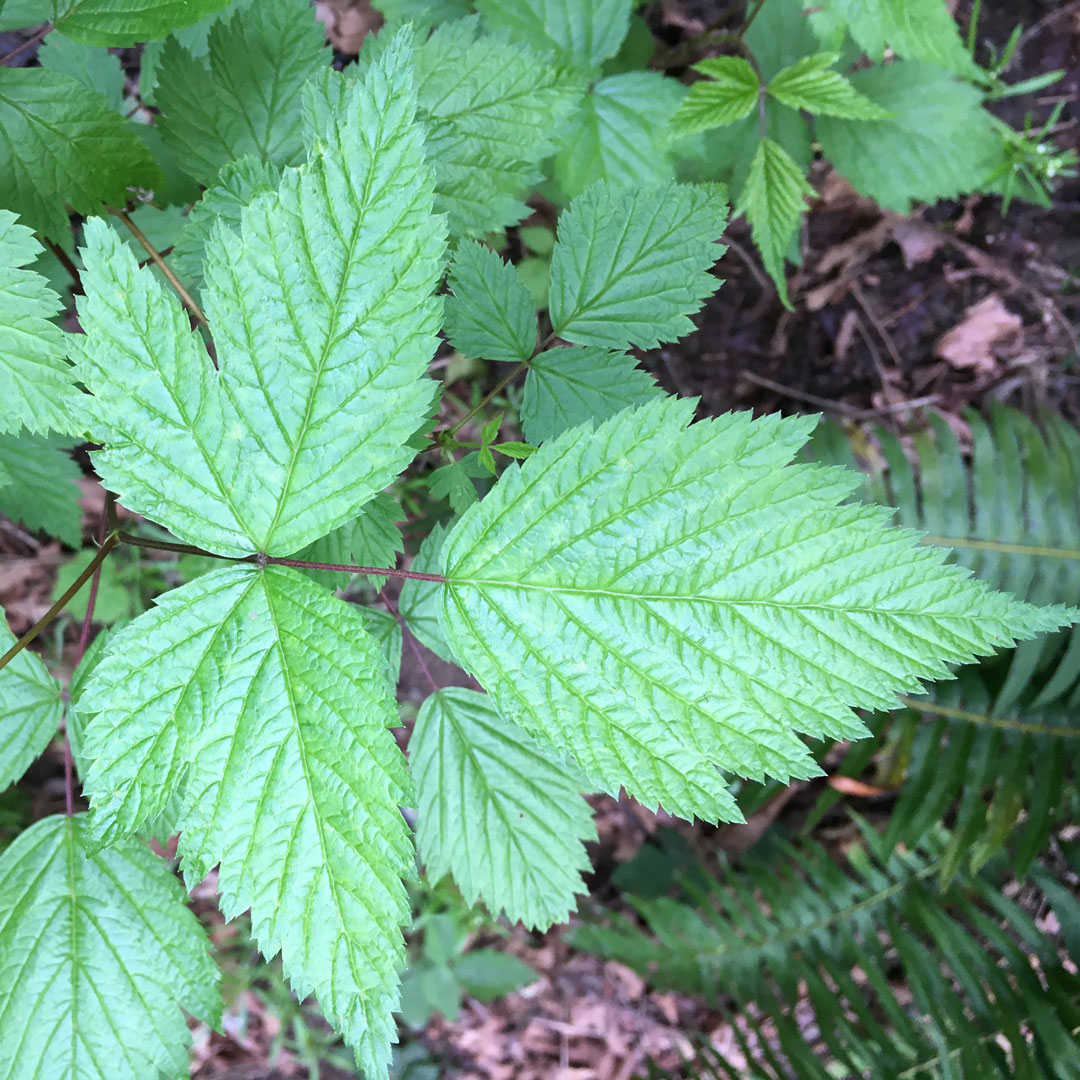
Leaves are comprised of three leaflets, very similar to those of trailing blackberry but with deeper serrations.
Stems:
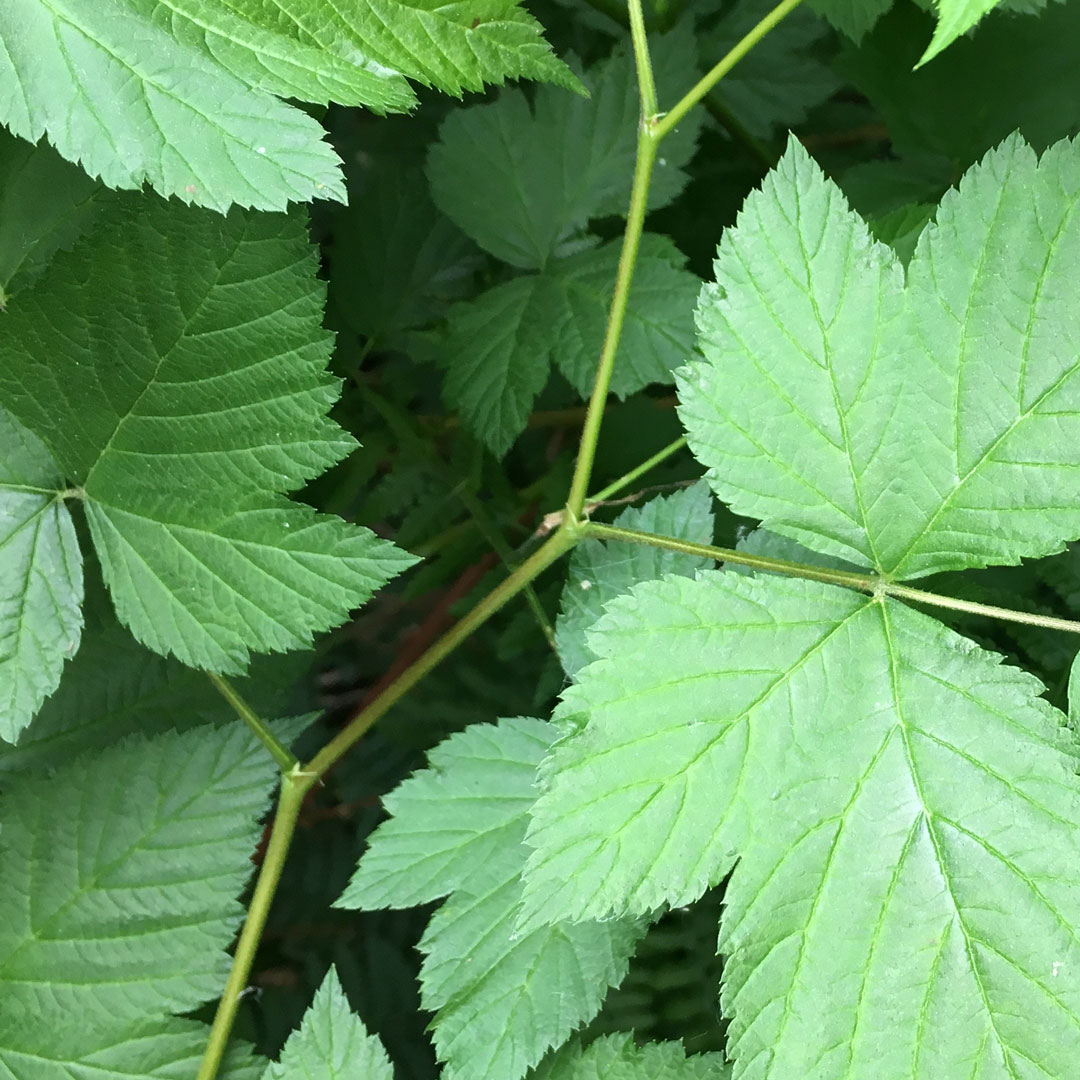
Round in cross-section, generally less spiny with smaller thorns.
Fruit:
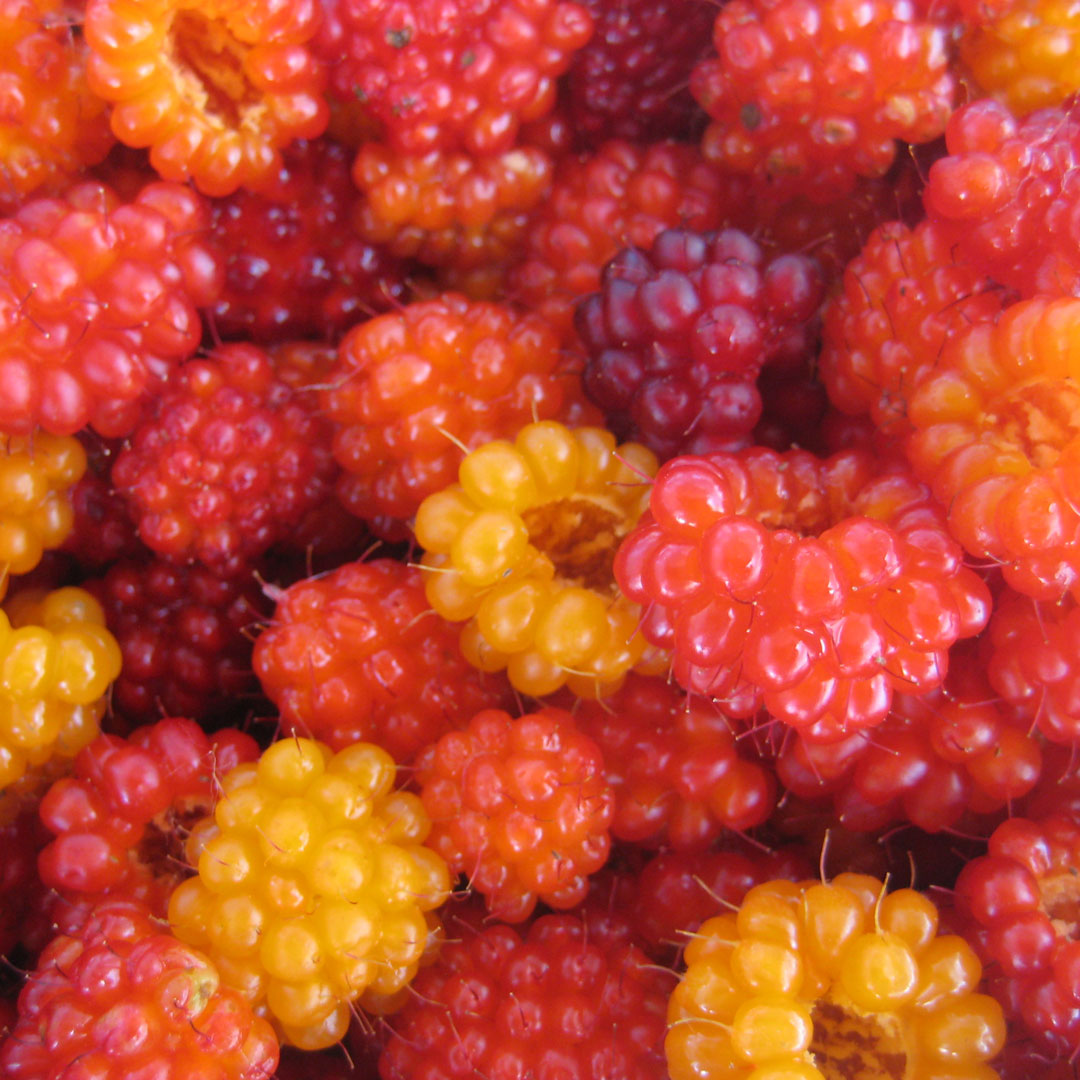
Berries range from yellow to purple when ripe.
Potential Look-Alikes
Roses (Rosa sp.)
Growth Habit: Upright growth, can form dense bushes.
Flowers:
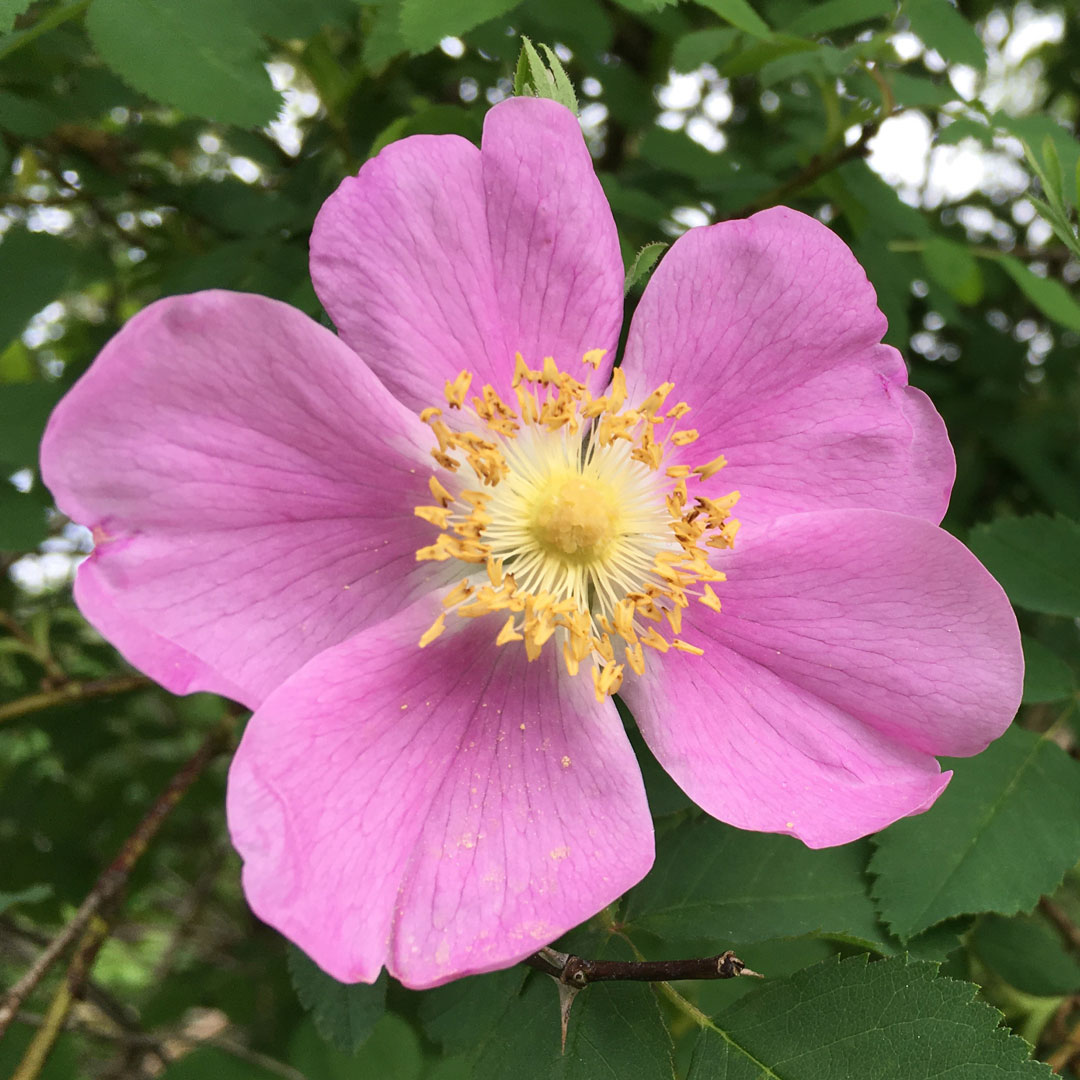
Large, fragrant flowers in various colors.
Leaves:
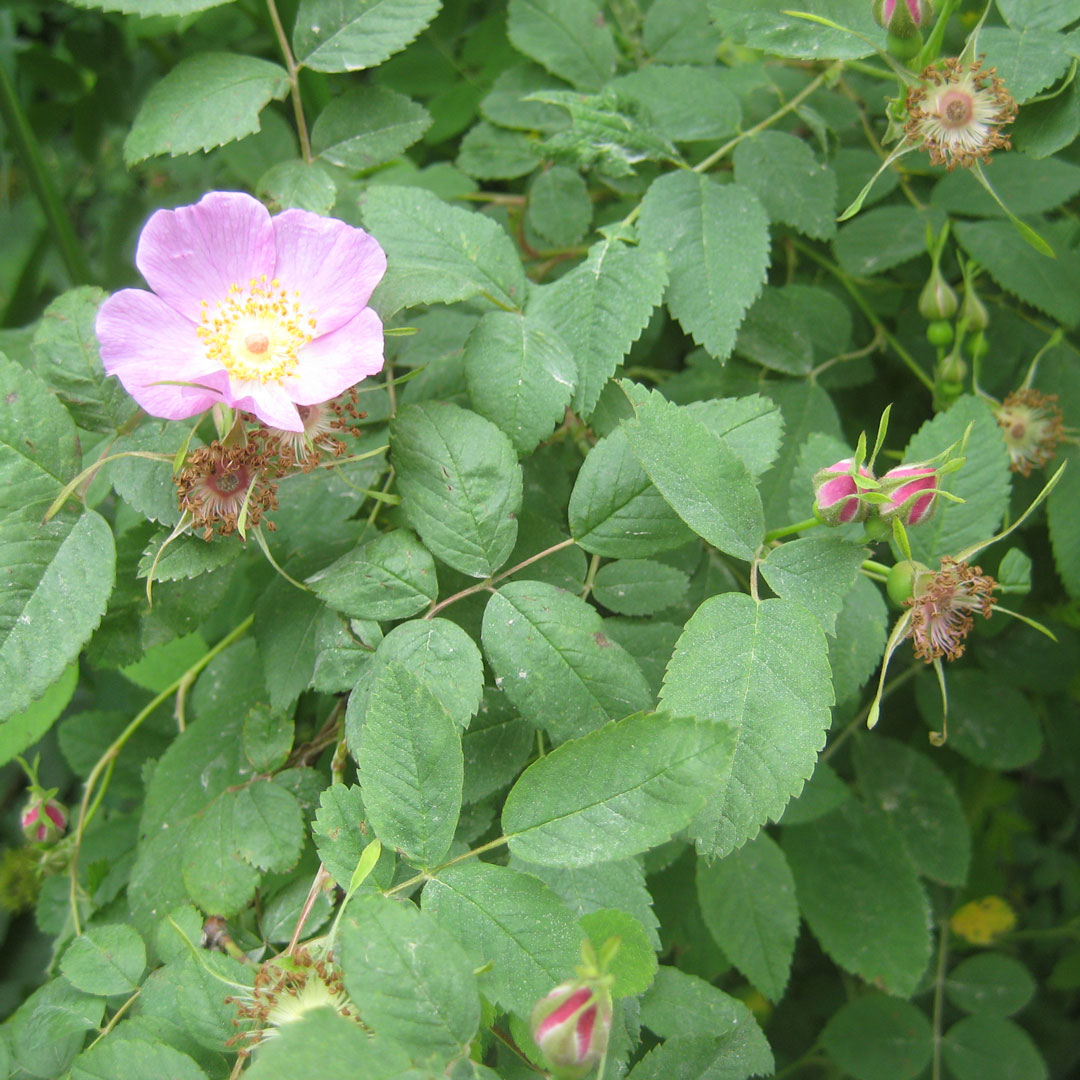
Smaller, rounder leaflets are grown in groups of 5-9 to form leaves.
Stems:
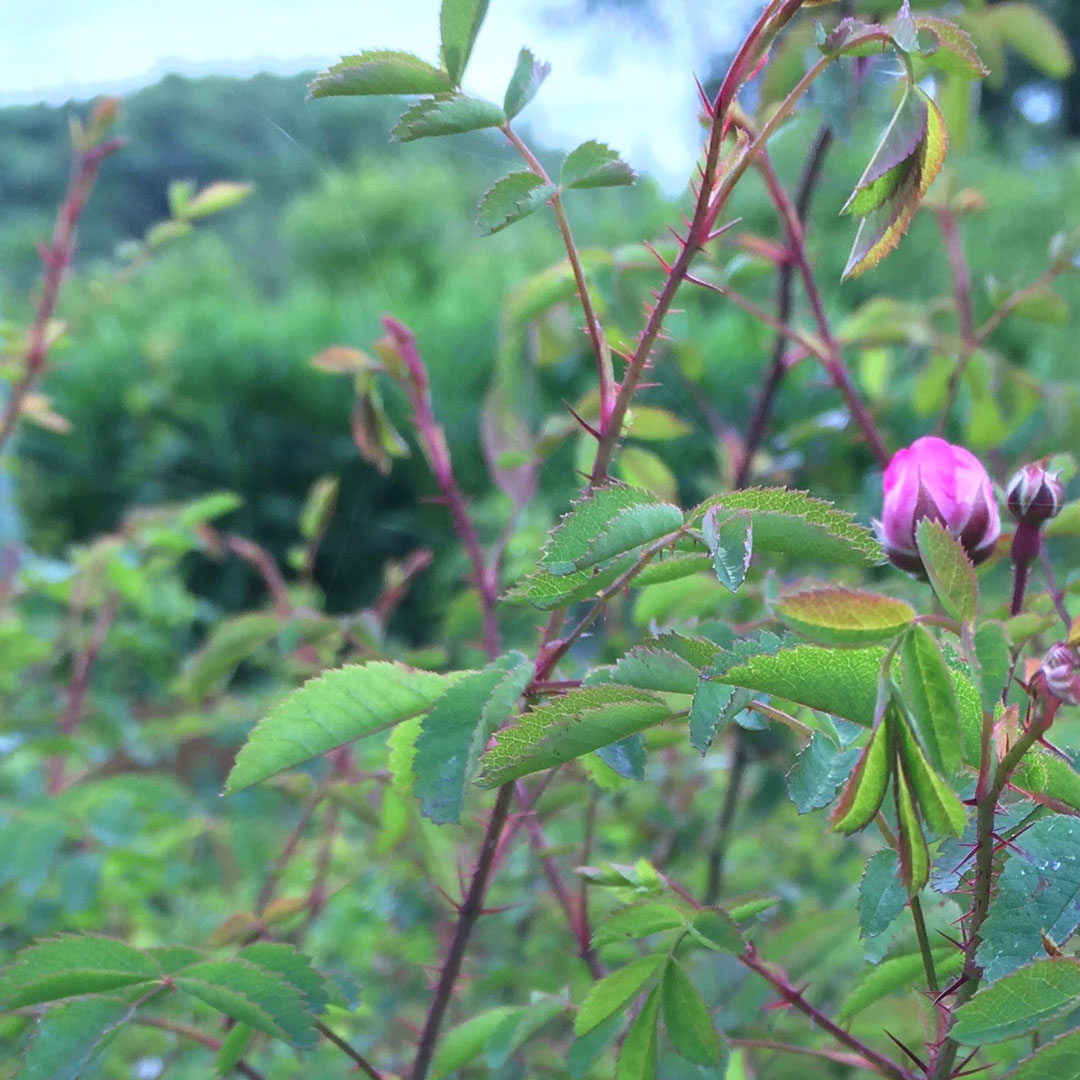
Very robust spines similar to blackberry canes, round stems.
Fruit:
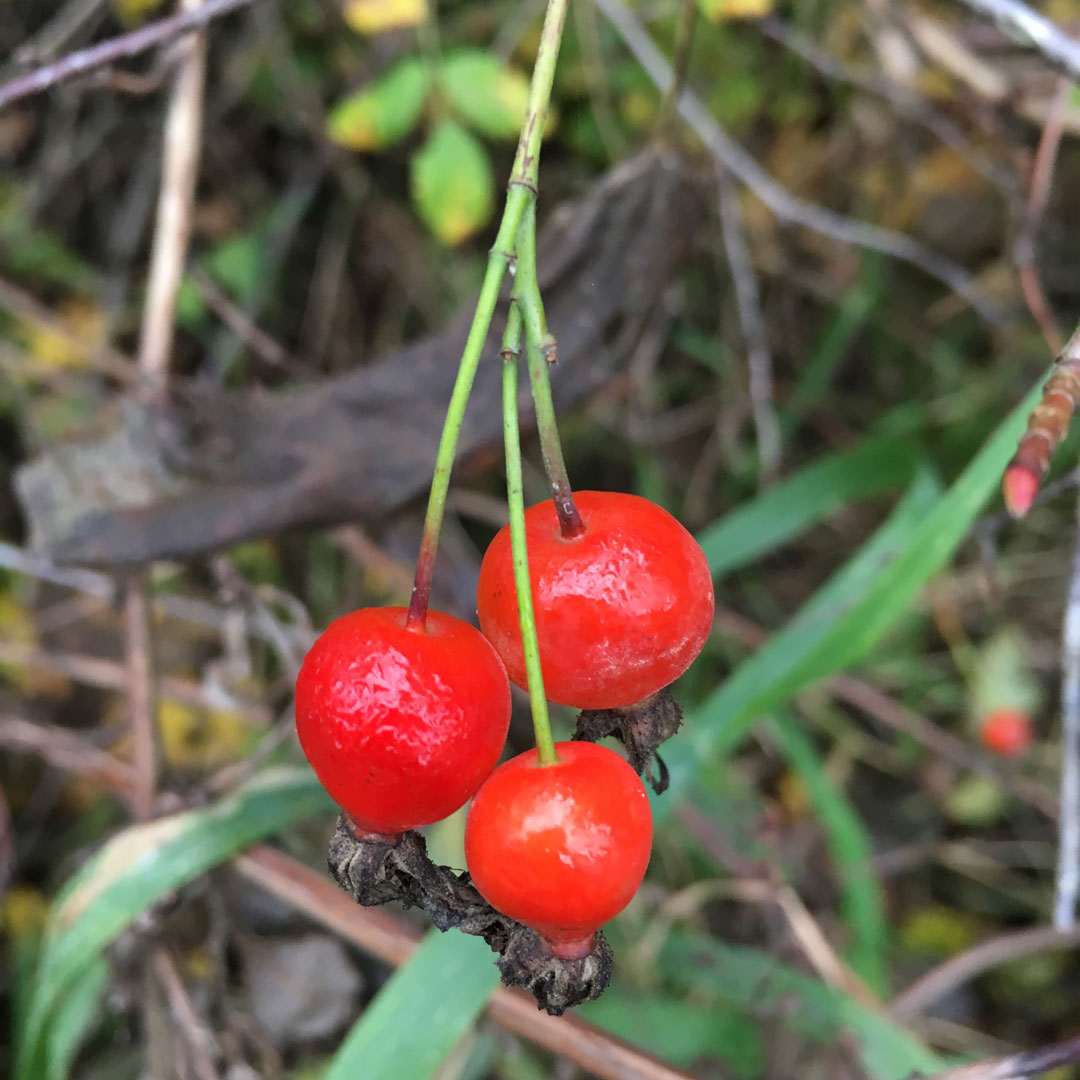
Rose hips, small red or orange fruits.
Blackcap Raspberry (Rubus leucodermis)
Growth Habit: Medium to small canes arch up to 6 feet, (2m) tall. Flowers: White to pink flowers grow in clusters of 3-10. Image: Gerald D. Carr Leaves: Smaller, rounder leaves, generally with three, or occasionally 5 leaflets. Stems: Prickly white to blue powdery stems. Image: Oregon State University Fruit: Hollow cap shaped berries, like a traditional raspberry but in a dark purple to black color. Foodies and forest heroes, unite! Grab a basket and head out to enjoy the delicious and rewarding activity of blackberry picking. Your taste buds and your local ecosystem will thank you! Not sure where to pick? You’re invited to Oxbow to walk our trails and enjoy the blackberry bounty. The best time to harvest is typically from mid-August to mid-September, though this can vary each year. If this inspires you to do more, join our ongoing restoration volunteer efforts! Click this link for a deeper dive into effective removal methods and discover what you can do to reclaim your space! 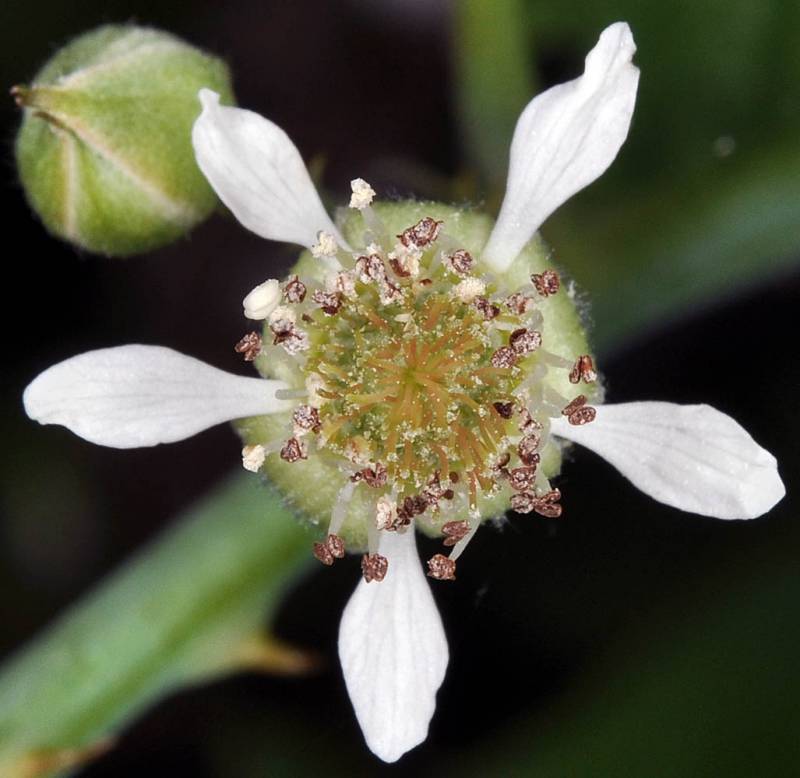
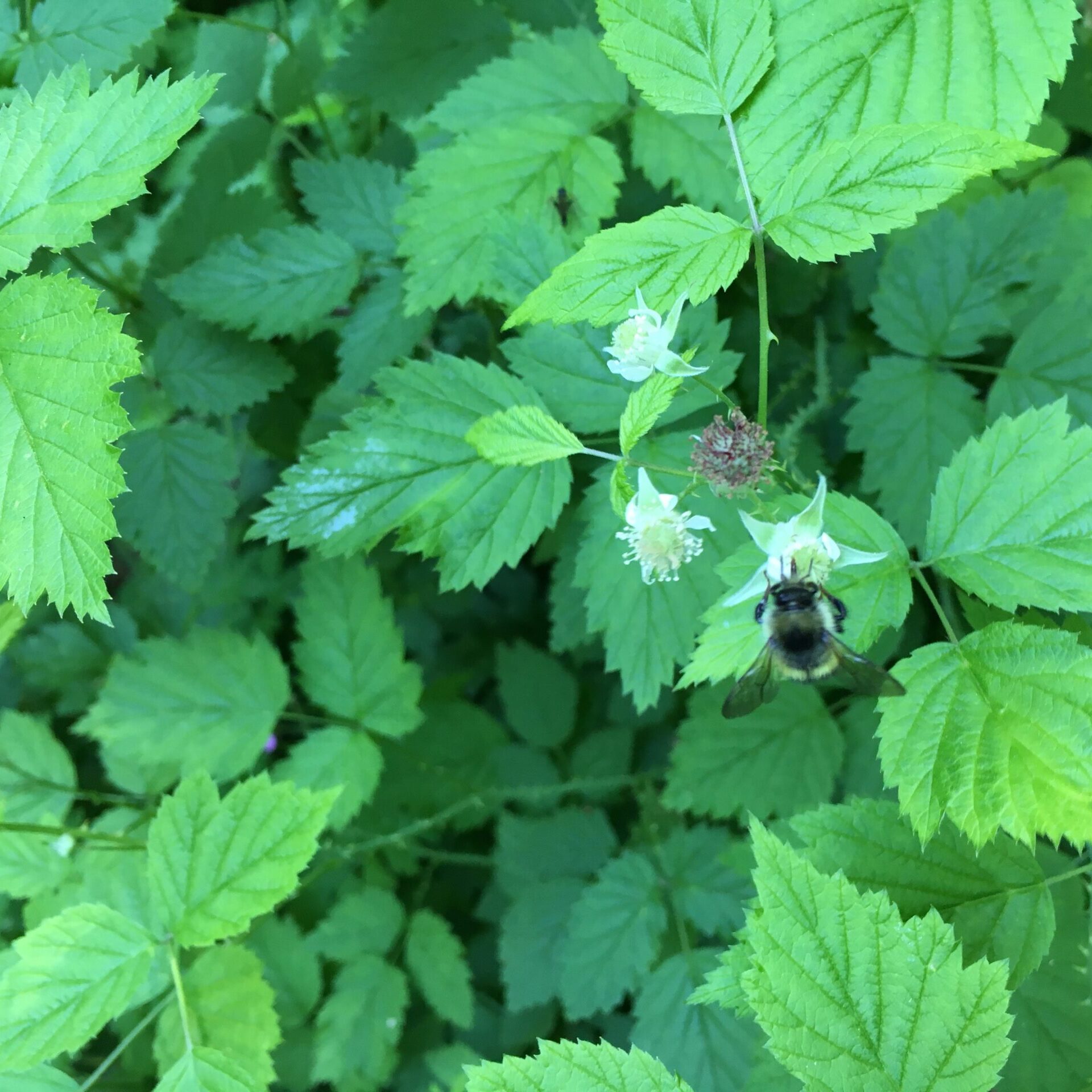
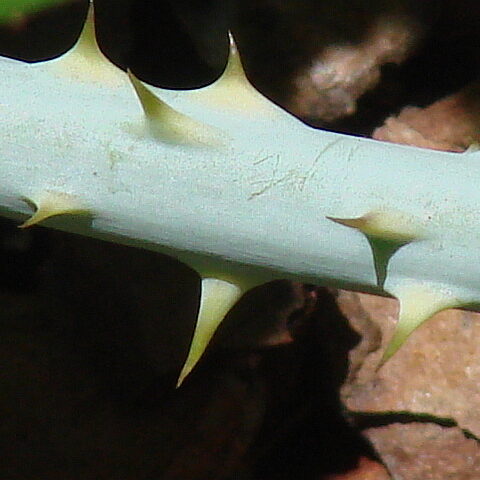
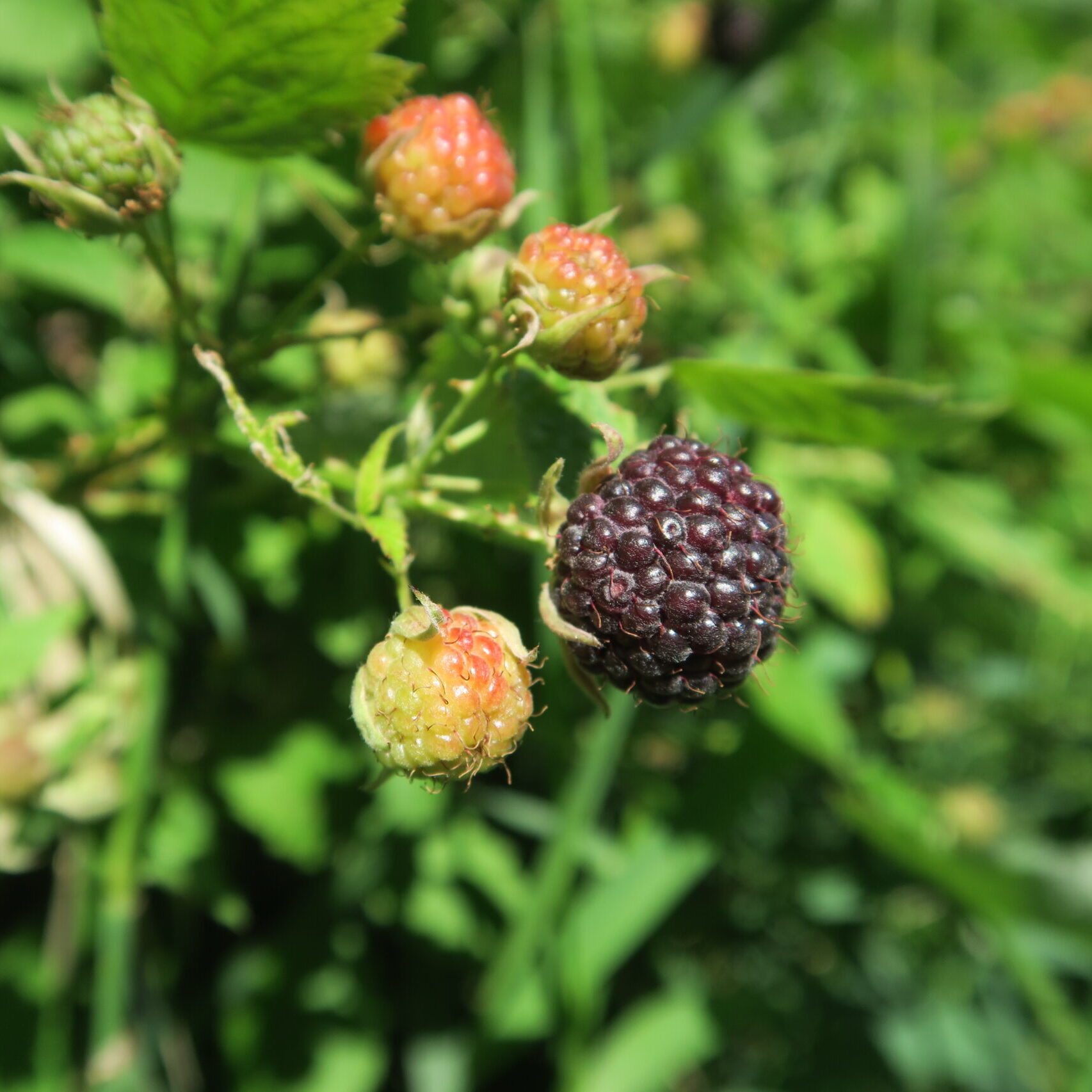
Happy foraging
Join the effort at Oxbow
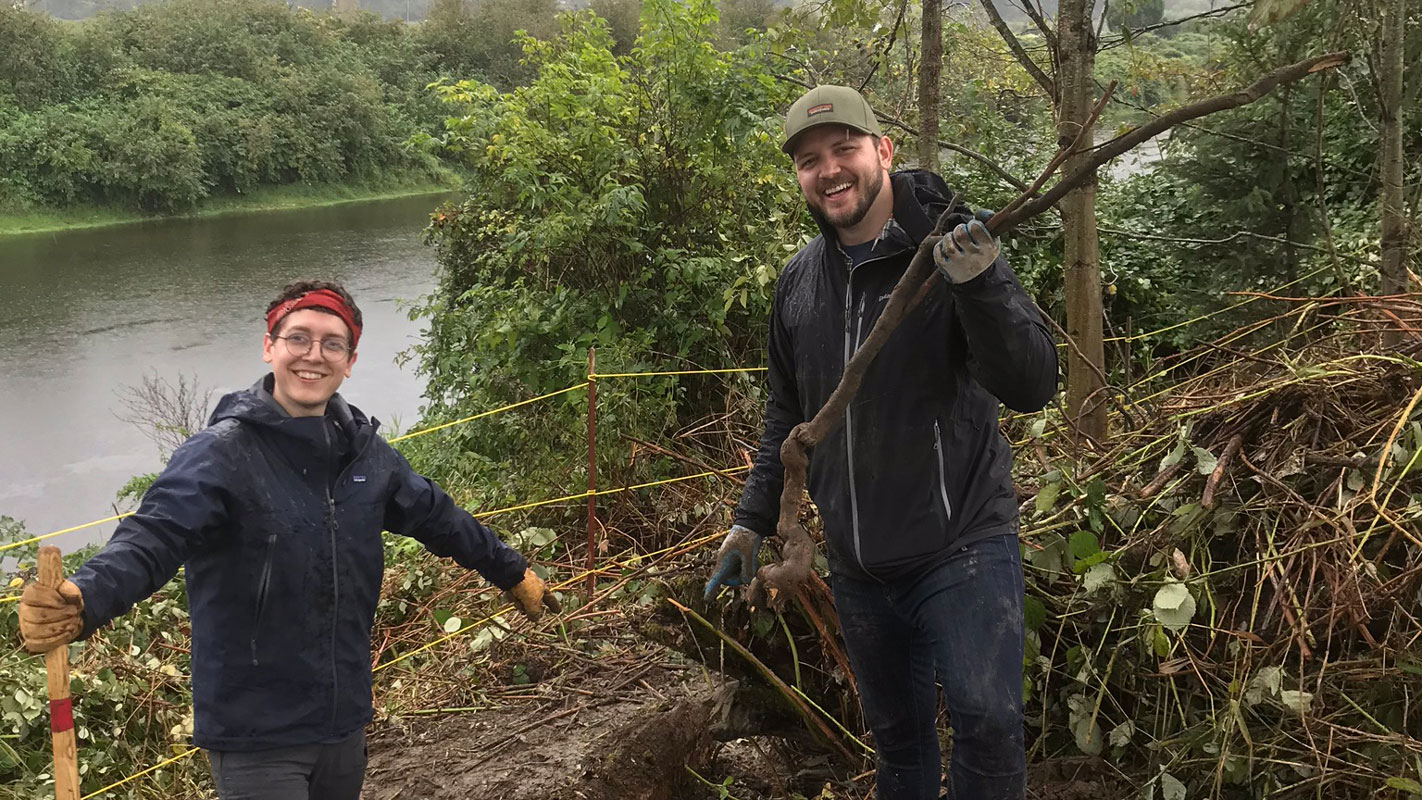
Struggling with invasive blackberry around your home?
References:

